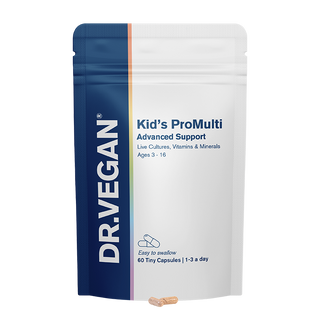Nutrition for children as they develop

It can be difficult or confusing for parents to decipher the avalanche of often conflicting advice found on the internet or social media when it comes to food and what they should give their children. Feeding children can be emotionally challenging and stressful, especially if the child is a picky eater or suffers from health conditions, allergies or intolerances. I like to keep it simple and advise parents to stick to what our beautifully evolved bodies and the human machine have known and thrived on for millions of years.
To achieve optimum health emotionally and physically, our bodies need macronutrients such as proteins, fats and carbohydrates and micronutrients such as vitamins, minerals and fermented foods to provide beneficial bacteria for a healthy gut - and let’s not forget water! Drinking enough water helps with digestion, aids the process of the elimination of waste and regulates temperature. As children go through the toddlers’ years and into adolescence, their dietary requirements will vary mostly in quantity rather than in variety to accommodate healthy growth and brain development. As long as the different food groups are present each day in quantity and quality, your child should reach their daily nutritional dietary requirements.
| Nutrient | Male | Female |
|---|
Let’s delve more specifically into the different age groups.
2 to 6 years old
At this stage there is a rapid growth development of the brain - about 80 to 90% of adult brain size is reached by the age of 3 - but also growing bones and muscles and a healthy immune system.
Key nutrients here are:
- Proteins for muscles help build a robust immune system and repair body tissues.
-
Calcium for strong teeth and bones.
-
Vitamin D, which helps absorb calcium and support bone development
-
Healthy fats for brain development.
7 to 10 years old
As learning ramps up at school, children require a higher need for B vitamins, which will help them learn fast, support mental focus, nerve function, mood and concentration. They also assist in energy production.
- Zinc is also very important at this stage, as children are more exposed to germs and need a robust immune system to fight infections. It also plays a big role in cognitive performance and rapid physical growth.
- Magic magnesium plays a big calming role for the nervous system, aids sleep and helps absorb calcium too, which is vital for bone health. Continue learning about how magnesium can support the body.
11 to 14 years old
Marks early adolescence with many physical, emotional and hormonal changes. It’s the most intense growth phase after infancy, and nutrition is crucial here to support puberty brain development and increased energy needs. Girls develop more fat stores which is normal for reproductive health, while boys gain more muscle mass.
Key nutrients:
- Proteins for muscle growth and hormone production.
- Calcium for peak bone-building years.
- Iron, especially for girls, as they may start menstruating and to avert anaemia.
-
Zinc for hormone production, especially for boys, as it controls testicular development and sperm production and overall male fertility.
15 to 18 years old
Puberty completes, but there are still some growth spurts and sexual maturity peaks.
- Increased need for proteins for skin, muscles and growth spurts.
- Carbohydrates for the extra energy teenagers require and healthy fats to help cognitive and hormonal needs. Read more on how to improve children’s focus & concentration.
- Potassium is vital for a healthy heart and kidneys.
-
Vitamin A for healthy vision
-
Iodine is extremely important to produce thyroid hormones that help regulate growth, metabolism, heart rate and a host of other vital functions.
As teenagers begin to take more responsibility for their lives, this can be a great time to encourage cooking skills and more independence with food choices.
Discover some examples of foods in which you can find the macro- and micronutrients aforementioned:
Unfortunately, modern busy lives are not on the side of parents, and our little ones don’t always eat the nutrient-dense food we’d like them to eat, potentially leading to deficiencies, and hence the need for supplementation. Picky eaters as well as children suffering from allergies or intolerances can also benefit from supplementation bridging the nutritional gaps. Furthermore, modern agricultural practices have also led to soil depletion, producing nutritionally poorer foods and crops, deeming supplementation necessary.
Kid's ProMulti is a comprehensive formula for children aged 3-16, optimising essential nutrient intake and helping protect against nutrient deficiencies. Kid's ProMulti is a pure formula, with zero additives and 25 active ingredients, including 2 strains of live, friendly bacteria. They come in tiny capsules that are easy to take for children and can also be opened up and sprinkled onto food.
*https://assets.publishing.service.gov.uk/media/5a749fece5274a44083b82d8/government_dietary_recommendations.pdf
You may also enjoy reading:


















